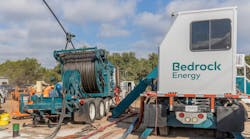The Biden-Harris Administration has released its first-ever Federal blueprint aimed at reducing greenhouse gas (GHG) emissions from buildings by 65% by 2035 and 90% by 2050.
The plan – called Decarbonizing the US Economy by 2050: A National Blueprint for the Buildings Sector – was developed by the Department of Energy and underscores President Biden’s whole-of-government approach to cutting carbon emissions and achieving the nation’s clean energy and climate goals.
“As part of a whole-of-government approach, the DOE is outlining for the first time ever a comprehensive Federal plan to reduce energy in our homes, schools, and workplaces – lowering utility bills and creating healthier communities while combating the climate crisis,” said US Secretary of Energy Jennifer Granholm.
According to the DOE, buildings account for over one-third of domestic climate pollution and $370 billion in annual energy costs. By following the Blueprint and achieving a 90% reduction in total GHG emissions from the buildings sector, consumers can save more than $100 billion in annual energy costs and avoid $17 billion in annual health costs.
To achieve these emissions reduction targets, the Blueprint outlines four strategic objectives:
- Increase building energy efficiency.
- Accelerate onsite emissions reductions.
- Transform the interactions between buildings and the electricity grid.
- Minimize the emissions from producing, transporting, installing, and disposing of building materials.
Each of the four objectives has specific performance targets as well as market, policy, and technology milestones to reach by 2035 and 2050 – all of which will require the accelerated deployment of decarbonizing and energy-efficiency technologies.
The Blueprint also outlines coordinated Federal actions that will increase the speed and scale at which these technologies and solutions are deployed. This includes:
- Funding research and development to create lower-cost technologies.
- Expanding markets for low-carbon technologies.
- Providing direct funding and financing.
- Supporting the development and implementation of emissions-reducing building codes and appliance standards.





